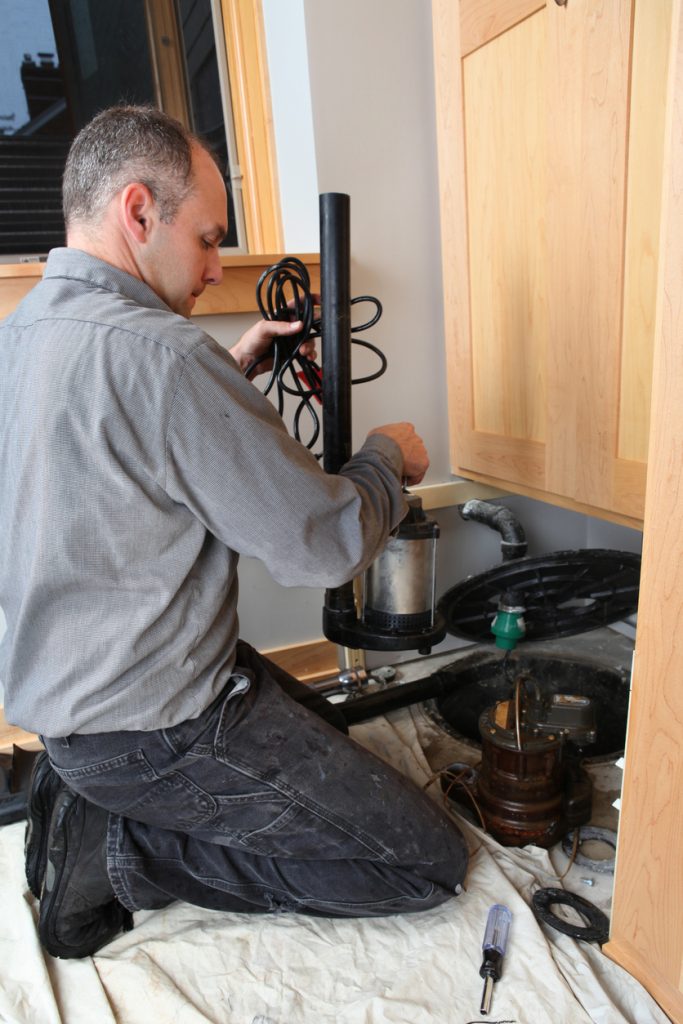Fast Solutions for Caring for a Sump Pump
Fast Solutions for Caring for a Sump Pump
Blog Article
We've uncovered this article relating to Cleaning & Maintenance Tips for Your Home's Sump Pump below on the internet and decided it made sense to relate it with you here.

Sump pumps are crucial parts in numerous homes, particularly in areas prone to flooding or excessive dampness. They aid protect against water damage by efficiently removing excess water from basements or crawl spaces. Nonetheless, like any other appliance, sump pumps need routine upkeep to ensure they operate effectively when needed one of the most. Cleaning your sump pump is a vital part of its maintenance, and understanding just how to do it effectively can save you from costly repairs and prospective calamities.
Introduction
Maintaining a tidy sump pump is crucial for its appropriate performance and durability. Overlooking this crucial job can cause obstructions, breakdowns, and inevitably, water damages to your home. For that reason, discovering how to clean up a sump pump is essential for home owners who depend on these devices to keep their cellars dry and safeguarded.
Understanding the Sump Pump
Prior to diving right into the cleansing procedure, it's important to have a standard understanding of just how a sump pump works. Generally set up in a pit or container below the cellar flooring, a sump pump contains numerous essential elements, consisting of a pump, a float button, and a discharge pipeline. When water accumulates in the pit, the float button triggers the pump, which after that pumps the water out via the discharge pipe, away from the building's foundation.
Indications of a Dirty Sump Pump
Recognizing when your sump pump requires cleaning is essential for preventing possible breakdowns. Some common indicators that suggest a filthy sump pump consist of unusual noises during operation, minimized water circulation, and noticeable debris in the pit. If you notice any one of these signs and symptoms, it's essential to cleanse your sump pump immediately to avoid any type of more issues.
Planning for Cleaning
Prior to you start cleaning your sump pump, it's vital to take some security precautions. Beginning by shutting down the power to the pump to prevent any type of electric mishaps. Additionally, use proper protective gear, such as handwear covers and safety glasses, to secure on your own from dust, debris, and potential pathogens.
Step-by-step Overview to Cleansing a Sump Pump
Shutting down the Power
Begin by disconnecting the power supply to the sump pump to stop any kind of crashes while cleaning.
Getting Rid Of Debris and Dirt
Make use of a container or a scoop to eliminate any noticeable particles, dirt, or debris from the sump pit. Dispose of the debris correctly to stop it from clogging the pump or the discharge pipeline.
Cleaning the Pump and Drift Change
As soon as the pit is free from debris, thoroughly eliminate the pump from the pit. Check the pump and the float button for any indications of damages or wear. Utilize a soft brush or cloth to clean up the surfaces and get rid of any kind of gathered gunk.
Purging the System
After cleaning up the pump and float switch, flush the sump pit with tidy water to get rid of any type of remaining dust or sediment. This will aid make sure that the pump runs efficiently and effectively.
Looking For Proper Functioning
Prior to re-installing the pump, do a fast test to make sure that the float switch triggers the pump appropriately. Pour some water right into the sump pit and observe the pump's operation. If everything is functioning appropriately, you can reassemble the pump and reconnect the power supply.
Upkeep Tips to Keep Your Sump Pump Clean
In addition to routine cleansing, there are a number of maintenance pointers you can comply with to keep your sump pump in optimum condition:
Verdict
Cleansing your sump pump is a vital aspect of its maintenance and ensures that it operates efficiently when you need it one of the most. By following the actions laid out in this overview and including regular maintenance right into your regimen, you can extend the life-span of your sump pump and safeguard your home from water damages.
6 STEPS ON HOW TO CLEAN A SUMP PUMP PROPERLY
UNDERSTANDING SUMP PUMPS
Your sump pump plays a crucial role in protecting your home by managing and removing excess water. It primarily functions as a “shield”, guarding your basement against the damaging effects of water accumulation. The pump is housed in a sump pit in the lowest part of your basement, and its job is to pump out any water that collects there.
During heavy rainfalls or when snow melts rapidly, water can infiltrate your basement, posing potential risks like flooding, structural damage, and harmful mold growth. Here, the sump pump springs into action, pumping out the intruding water and directing it away from your home.
SAFETY FIRST
Before cleaning, remember to prioritize safety. Disconnect the sump pump from the power source to prevent any accidental electric shocks. Also, wear sturdy gloves to protect your hands from any sharp or dirty components within the pump.
REMOVE THE SUMP PUMP
After ensuring your safety, the next step is to remove the sump pump from its pit. Doing this might require careful maneuvering as you don’t want to damage any pump components. Once removed, clean the sump pit to remove any accumulated debris or sludge.
INSPECT THE PUMP
Inspect the pump for any visible signs of wear or damage. Check the power cord, float switch, and impeller housing. If any components look worn out or damaged, consider replacing them to ensure optimal performance.
CLEAN THE PUMP
Thoroughly clean the pump with warm, soapy water. Make sure to rid it of any dirt, gravel, or other debris that might impede its performance. You can use a toothbrush to clean the small, hard-to-reach parts of the pump.
REINSTALL THE SUMP PUMP
Reinstall the pump into the sump pit Make sure it’s positioned correctly to remove the water effectively Once it’s back in place, reconnect it to the power source TEST THE PUMP
Finally, pour some water into the pit to ensure the pump works correctly. It should start automatically and begin pumping out the water; if it doesn’t, check the power source and the positioning of the pump.
Remember, while cleaning your sump pump is an essential part of home maintenance, hiring a professional plumber for a thorough inspection and cleaning at least once a year is also important. This will ensure that your pump is in optimal condition, ready to protect your home from potential water damage.
BEST PRACTICES FOR CLEANING SUMP PUMP DISCHARGE PIPES
Regular Inspection: Regularly inspect your discharge pipes, especially during heavy rainfall or snowmelt periods. Look for any signs of blockage or damage. Early detection of problems can prevent serious issues down the line. Periodic Cleaning: Over time, sediment and debris can accumulate in the discharge pipes, impeding the flow of water. Regular cleaning helps keep the pipes clear and functioning efficiently. You can use a high-pressure water jet to effectively clean the pipes. Insulation During Winter: In colder climates, discharge pipes can freeze, blocking the outflow of water. Protect your discharge pipes from freezing temperatures by insulating them with foam pipe insulation. This will ensure the sump pump can continue to discharge water even in freezing conditions. Proper Positioning: The discharge pipe should be positioned to direct water away from your home’s foundation. Improper positioning can lead to water seeping back into the basement. Ensure the pipe is long enough and angled correctly. Installation of a Check Valve: A check valve prevents water from flowing back into your sump pit after the pump has pushed it out. Installing a check valve helps maintain the efficiency of your sump pump and reduces the risk of flooding. Minimize Pipe Turns: Every curve or turn in the discharge pipe can decrease the efficiency of water flow. By minimizing turns and bends in your discharge pipe, you can increase the efficiency of your sump pump. https://www.fullspeedplumbing.com/how-to-clean-a-sump-pump-properly9999/

I'm very interested by Cleaning & Maintenance Tips for Your Home's Sump Pump and I hope you liked our blog entry. Do you know about somebody else who is excited by the subject? Why not share it. Thanks a lot for going through it.
Top Article Report this page